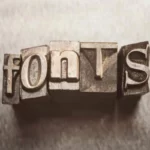- Inside-out of the Redux
- What are the features of Redux?
- When should you use Redux?
- Basic definitions
- What are the main ideas?
- Main pros of Redux
A strong application state management pattern is provided by Redux. It is a well-liked library with a big community and great documentation that many projects and businesses use to manage state and side effects. Applications that require data sharing across several separate components are particularly well suited for it. If you are a newbie, it could be worth a go in a future project. You may learn more about Redux’s features and goals from our post.


Inside-out of the Redux
What pertains to the state of a certain program is all that is in the RAM of a personal computer and related to the particular functioning of the application. The software is made up of modules, components, and building pieces. Every block has its state. For instance, the selections in a drop-down list could not all be visible. It means while the drop-down list’s value has not changed, neither have the attributes of the other app elements.
The fact the software has an overall state is likewise essential to consider. Here, we refer to a portion of the program’s state used, viewed, or altered in different components and modules. Changes in other utility elements as a result of choosing an item from the drop-down list are an illustration of a global state. Developers must carefully control the overall application state. Redux can help you with this.
What are the features of Redux?
A state manager that works with several libraries is called Redux. React is the most popular Redux companion. Nevertheless, this library does not constrain a state manager’s potential. It can be used with several tools, including:
- JavaScript
- Vue
- Angular
2015 saw the release of Redux for programmers. Back then, it was a reaction to the fascinating software’s rising complexity. To quickly become one of the most well-liked front-end architectures, the manager combined the technique provided by FLUX with functional programming. The management of the global state utilities is the tool’s primary objective. It is possible to figure out more information about the various principles making up the core of such a library later.

When should you use Redux?
While carrying out a simple project, the state manager is optional. It will be challenging without Redux capability if distinct components of the product require the same state but are found in various areas of the program.
The typical local storage techniques can be replaced, which is a great reason to use the manager. Take React storage as an illustration. It is segregated here. Props or elevating the element to the element’s closest “parent” should be used when you need to pass state between multiple components. It’s simple to solve this kind of issue with Redux.
Basic definitions
A reducer receives the old state and action as inputs and outputs the new state. An object specifies a type, and a load is referred to as an action. Reducers determine how the app’s state alters in response to commands offered to the store.
Simple JavaScript objects called actions serve as the payload for information transmitted from an application to a store. Actions require a type and, if desired, a payload.
A function that produces an action object is referred to as an action creator in Redux. Although an action creator may appear to be an unnecessary component, it improves portability and streamlines testing. All of the app’s reducers receive the action object that the action producer gave back.
A store in Redux is an object that combines reducers and actions, which reflect what transpired (which updates the state according to those actions). With a Redux program, there can only be one store.
What are the main ideas?
The manager’s primary goal is establishing a centrally-controlled location to store the software’s global state. Three key ideas must be applied to accomplish these objectives:
- One source only. There is just one location where the program’s data is kept, and no copies are ever made. State trees are used to organize the global state. In this procedure, terms like “storage” and “source of state” are applied. Such terms should be understood as the location of the global state. This idea provides the ability to centralize and customize applications. The availability of information in one spot offers the chance to work with the software.
- Reading data is the only access to the program state. Because feature discovery is locked, you cannot alter any of the global state data. Information can be read by elements using software, but it may not be rewritten at will. It avoids unforeseen data corrections. As a result, the circumstance in which the object was altered did not result in the function which was never received. The action must be directed to make any modifications, and then the particular object will inevitably report a correction.
- Only reducers cause changes to appear. Any adjustments-related operations must go through the components. They enable the formation of an object’s brand-new state.
The three parts of application management with this manager are the source, the interface (which is constructed based on the current state), and the action functions.
Main pros of Redux
Because of its various advantages, many software developers today opt for the Redux state manager. The key benefits include the following:
- A user-friendly interface;
- Simple management;
- Simplified scaling;
- Rapid learning processes (particularly for users who work with any significant JavaScript framework);
- A wide range of practical components.
Numerous supplementary libraries and tools for such management make using the software easier. They alter the model, giving you more working flexibility.



